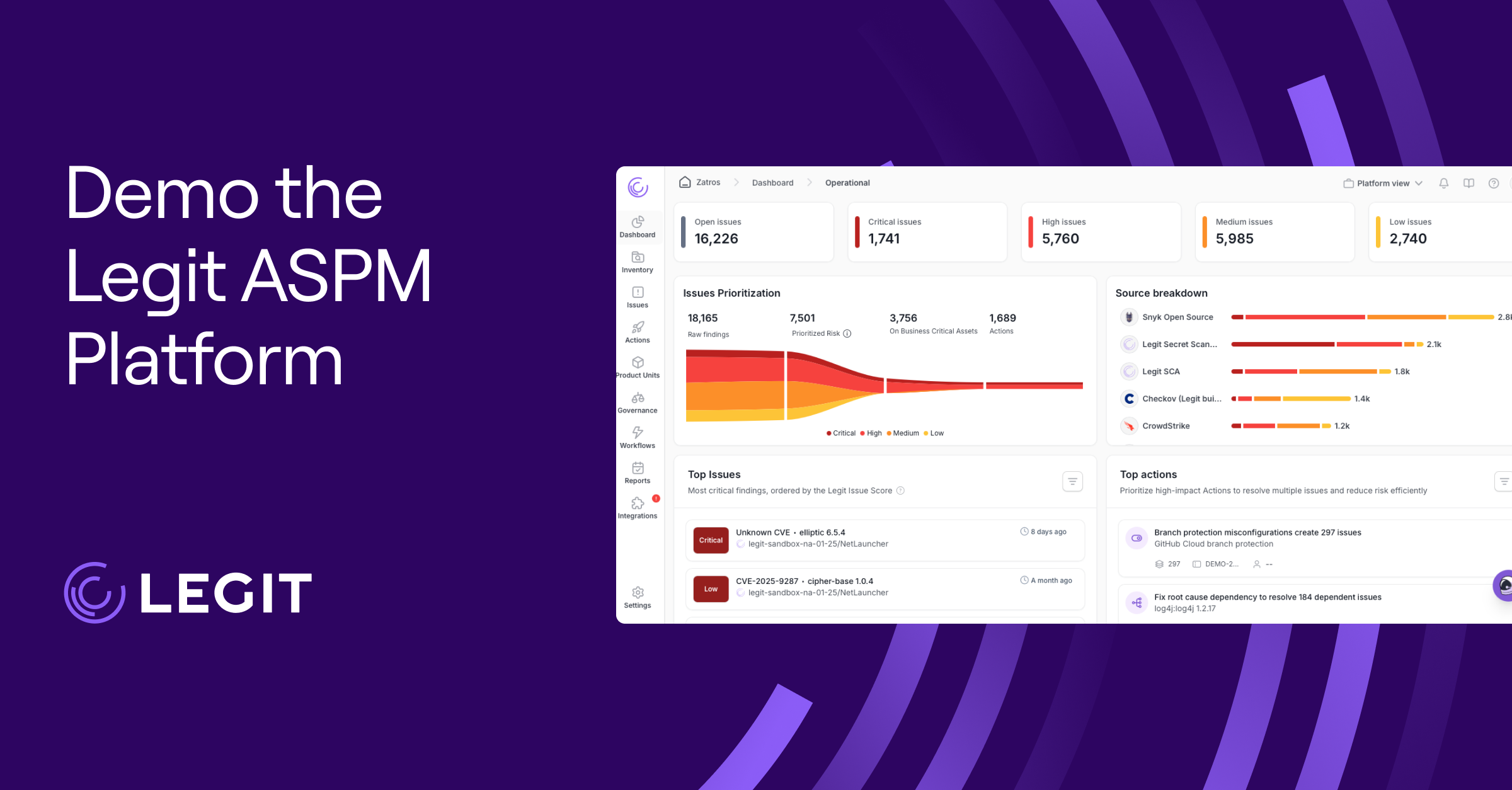It’s not a matter of if security incidents will happen, but when they’ll strike. Even the strongest preventive controls won’t catch everything. Cybersecurity monitoring tools fill that gap by providing real-time visibility into your environment. They detect suspicious activity as your organization scales and give your team the insights needed to act before small issues spiral into major breaches.
Check out five excellent tools to mix and match for your organization’s continuous monitoring, as well as advice on how to keep tabs on multiple levels of your ecosystem—and why it’s important.
What Is Cybersecurity Monitoring? Key Features
Cybersecurity threat monitoring is the ongoing process of tracking, analyzing, and responding to activity across your digital environment. It’s how security teams stay alert to threats that sneak past perimeter defenses like firewalls or endpoint detection and response (EDR) platforms. Unlike legacy security tools that rely on prevention, monitoring takes a proactive approach by assuming data breaches will happen and spotting suspicious behavior as it unfolds.
Security monitoring tools work by collecting telemetry from across your systems, such as user activity, cloud workloads, and network traffic. That data is fed into detection systems that flag anything unusual, like a login from an unfamiliar location or a rogue script running on a container. Some tools go further, integrating into security information and event management (SIEM) and threat intelligence feeds. This allows the monitoring tools to centralize data, monitoring patterns and potential threats to provide context and accurate alerts.
4 Places Where Cybersecurity Monitoring Happens
Threats don’t stay confined to one part of your environment, so your monitoring can’t either. Effective cybersecurity monitoring means covering multiple layers—from infrastructure to cloud workloads—so you can detect issues wherever they show up.
Each of these areas plays a role in building a stronger threat detection and response (TDR) strategy. When you can see what’s happening across your tech stack, you’re better equipped to respond quickly and contain threats before they escalate.
1. Infrastructure Monitoring
Infrastructure monitoring focuses on the core systems that keep your business running: servers, virtual machines, and hypervisors. Tools monitor these resources in real time and alert you when something drifts out of line. They can help a security team bolster the first line of defense by identifying signs of serious trouble, like performance bottlenecks, system failures, or malicious activity that might indicate an attack.
2. Network Monitoring
Network monitoring makes the traffic moving through your routers, firewalls, and switches visible. It can help you detect unauthorized access attempts or lateral movement across your systems. To catch threats before they spread or break through, try tools that can provide deep insight into network security and monitoring data.
3. Application Monitoring
Whether you’re creating internal tools or public-facing services, application monitoring tracks how your software behaves in real time. These tools look at metrics like response times, error rates, and memory usage, and unusual patterns in those metrics that might signal abuse or an attack. The goal is to uncover issues that affect performance and security, giving you a better picture of where your applications might be vulnerable or behaving unexpectedly.
4. Cloud and Workload Monitoring
Cloud services shift fast, and attackers take advantage of that. Cloud monitoring tools keep an eye on dynamic workloads across cloud platforms to flag things like misconfigurations, privilege escalation, or unauthorized activity. By combining configuration scanning with real-time cyber monitoring, you get full visibility into what’s happening at the infrastructure and runtime level.
While these four areas form the foundation of most monitoring strategies, many organizations are also expanding into specialized domains, including identity and access management (IAM) monitoring and Internet of Things (IoT) observability. These personalized touches offer more visibility where your organization needs it most.
What Tools or Methods are Available for Cybersecurity Monitoring?
The right cybersecurity monitoring stack blends multiple tools that specialize in different layers of defense. Some tools collect and correlate data, while others take action on threats. Here are a few worth knowing.
Legit Security
Legit Security provides visibility across the entire software development lifecycle (SDLC). It monitors your pipelines, code, and Infrastructure as Code (IaC) to catch vulnerabilities early before they reach the production environment. But these monitoring features don’t stop at detection: Legit uses AI to highlight what actually matters based on business context, SDLC posture, and real usage.
Teams use Legit to detect vulnerable dependencies and stay audit-ready, even in fast-moving CI/CD environments. While some tools focus solely on runtime, Legit monitors your environment from code to cloud.
Wazuh
Wazuh is a popular open-source SIEM platform that pulls logs from your environment and continuously monitors them for suspicious activity. It watches for signs of compromise, like repeated login failures, and can automate responses such as IP blocking or triggering multi-factor authentication (MFA).
Wazuh is agent-based, which means it offers deeper endpoint visibility than log-only solutions. It includes compliance reports for the General Data Protection Regulation (GDPR) out of the box, among other documentation. Many teams use it to build cost-effective monitoring stacks.
Splunk
Splunk is a widely adopted platform for enterprise monitoring. It ingests large volumes of structured and unstructured data from servers, apps, and cloud services, then gives you the tools to monitor activity across these environments. You can also generate custom dashboards and alerts within Splunk if there’s a particular concern or ecosystem your team wants to watch.
While powerful, Splunk’s licensing model can get pricey as your data volume grows. Still, its scalability and app marketplace make it a go-to for large organizations that need deep visibility and flexible integrations across the board.
Suricata
Suricata is a high-performance intrusion detection and prevention system (IDS/IPS) that analyzes network traffic in real time. It detects threats using signature and anomaly-based methods, and can actively block known attack patterns like data exfiltration or lateral movement.
This monitoring tool is built for speed—supporting multi-threaded inspection on high-throughput networks—and works well as an addition to SIEMs or other monitoring tools. When properly tuned, Suricata fills the gap between perimeter security and full traffic analysis.
Datadog
Datadog detects suspicious activity in cloud environments, such as AWS. It continuously monitors logs and user behavior to find threats like exposed services, privilege misuse, and sudden spikes in traffic.
Datadog correlates data from over 900 third-party platforms to create a robust working knowledge of common errors and attack patterns. Because it’s built on Datadog’s larger observability platform, this monitoring tool can tie security insights to infrastructure and performance data to give you a fuller picture of what’s happening across your workloads.
How Can Organizations Implement Cybersecurity Monitoring?
Start fortifying your monitoring processes by identifying the systems and data that need the most protection in your environment. Many organizations begin by monitoring endpoints, cloud services, and identity activity, then expand to cover more specific areas unique to their niche like container environments and software-as-a-service (SaaS) integrations. From there, you can layer on tools like SIEMs for correlation and IDS/IPS systems for real-time threat detection.
Monitoring strategies often blend multiple approaches to maximize coverage without introducing false flags. Organizations are adopting AI cybersecurity tools to filter noise. At the same time, shift-left practices like integrating secrets scanning tools into pipelines catch sensitive data exposure before code ships.
Broader vulnerability management tools also play a role in cybersecurity monitoring, tying it back to remediation by tracking exposures across assets. When these elements work together, monitoring truly becomes a continuous process.
The Importance of Cybersecurity Monitoring
Cybersecurity incidents are inevitable. Whether you’re facing ransomware or insider misuse, attackers constantly evolve their tactics, and the risks to your systems, data, and reputation are very real. Without proper monitoring in place, breaches can go unnoticed until they cause damage, harming your customers and stakeholders trust long-term.
Continuous monitoring is a cornerstone of modern security strategies because it catches concerns often and early. It gives you the ability to detect threats as they unfold, minimizing potential fallout. Beyond catching attacks, monitoring strengthens your compliance by showing auditors and other third parties that you’re actively tracking events across your environment.
Monitor Your Systems With Legit Security
Most monitoring platforms focus on runtime environments, but by the time a risk is flagged, the risk has already made it into production. Legit Security takes a different approach. It integrates continuous monitoring earlier in the development process so you can catch vulnerabilities before they ever reach live systems.
By combining SDLC-wide visibility with AI-driven prioritization, Legit helps you zero in on the issues that matter most and remediate them faster for a stronger security posture. With Legit, monitoring is about building security into the way your software is developed and delivered, not applying security measures after the fact.
Curious about Legit Security’s application monitoring and other security tools? Book a demo today.
Download our new whitepaper.


